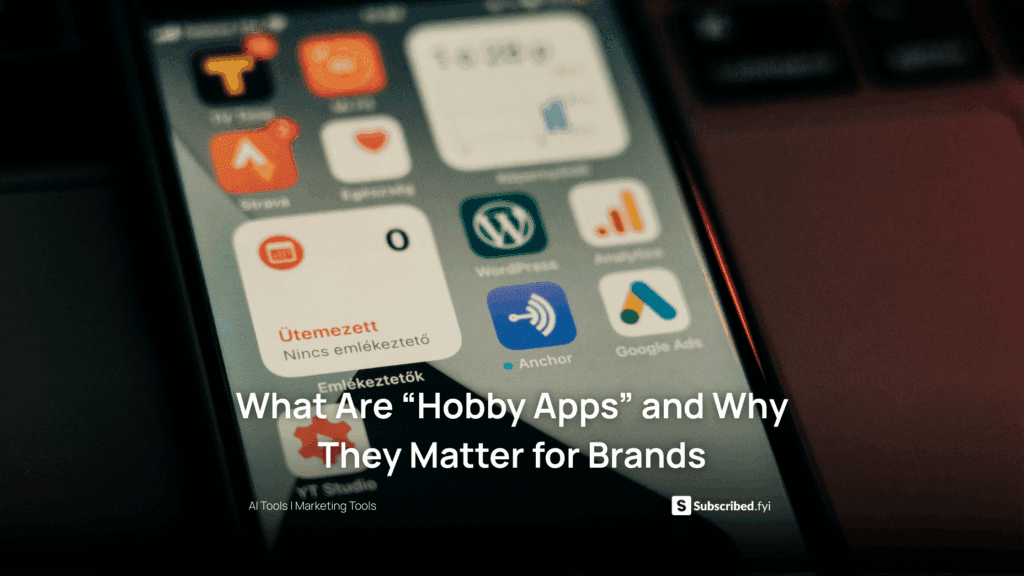Can You Build a Progressive Web App in Minutes?
- WebOps Platforms Bug Tracking & Feedback Software Web Development & Design Website Builder


Building modern web experiences is easier than ever with tools like Hostinger Horizons, which act as your personal AI software engineer for web apps. Instead of wrestling with code editors or server setups, you can describe the features you need—offline support, push notifications, installable homescreen icons—and see a live Progressive Web App (PWA) take shape in minutes. Horizons handles hosting, SSL, domains, and real-time sandbox testing, so you focus on functionality rather than infrastructure.
No-code PWA builders are transforming how solopreneurs and small teams launch apps. Platforms listed in the AI-powered website builders directory and the Vibe Coding category offer templates, visual editors, and service-worker scaffolding without writing a single line of JavaScript. Whether you want to prototype a mobile-friendly e-commerce app or a content-rich blog with offline reading, today’s tools make PWAs as simple as clicking “Generate” and “Publish.”
Understanding Progressive Web Apps
What Is a Progressive Web App?
A Progressive Web App blends the best of websites and native mobile apps. Users access it through a browser but can install it on their device like an app. PWAs work offline, send push notifications, and load quickly—even on slow networks—by using modern web technologies such as service workers and web app manifests.
How Service Workers Work
Service workers are scripts that run in the background, separate from web pages. They intercept network requests to cache resources, enabling offline access and fast reloads. When a user revisits your app, the service worker serves cached files, ensuring instant load times. If a network is available, it fetches fresh content in the background to keep data current.
The Role of Web App Manifest
A web app manifest is a simple JSON file that tells the browser how your PWA should behave when installed. It defines the app name, icons, theme colors, and display options (full screen, minimal UI). When users “Add to Home Screen,” their device reads this manifest to create a native-like icon and splash screen.
Benefits of PWAs Over Native Apps
Offline Access and Reliability
PWAs work offline or under poor network conditions by caching key assets through service workers. Users can view content, submit forms, or read articles even without an internet connection, boosting engagement and reducing frustration.
Faster Load Times and Performance
By caching static assets and using background synchronization, PWAs load in under a second on repeat visits. Tools like Windsurf specialize in data-driven performance optimizations, but built-in PWA features already deliver speed gains out of the box.
Lower Development and Maintenance Costs
Building separate apps for iOS, Android, and the web can be costly and time-consuming. PWAs run everywhere in a single codebase, cutting development costs by up to 50%. No-code builders like Hostinger Horizons slash expenses further by handling hosting, domains, SSL, and support in one plan.
No-Code PWA Builders in 2025
Hostinger Horizons
Hostinger Horizons enables you to chat your PWA requirements—“create service worker, manifest, offline article cache”—and get a live app deployed on a global CDN within minutes. It bundles hosting, domain registration, SSL certificates, and 24/7 expert support, so you never juggle multiple accounts.
Lovable AI
Lovable AI excels at emotion-driven layouts. It can generate PWA-compatible templates optimized for user engagement and retention, complete with cached resources for offline usage.
Bolt
Bolt focuses on performance-first PWA builds. It automatically configures code splitting, adaptive images, and service workers, ensuring fast load times and sleek offline behavior.
Tempo
Tempo turns sketches into full PWA prototypes. Upload wireframes or describe UI flows, and Tempo creates the HTML, CSS, and service-worker scripts you need to launch a working app.
V0
V0 provides minimalist PWA modules—caching, manifest, registration—through a drag-and-drop interface. It’s ideal for simple apps that need core PWA features without extra bloat.
Lazy AI
Lazy AI automates repetitive tasks like generating manifest files and registering service workers. You prompt the AI, and it sets up offline support, notifications, and progressive caching in one go.
Fine AI
Fine AI helps you craft conditional caching strategies and background-sync workflows. Its smart assistant suggests the best service-worker patterns for your use case.
Windsurf
Windsurf’s data-driven approach lets you connect a backend API and visualize data dashboards within a PWA shell. It configures offline caching for data endpoints and provides real-time updates when connectivity returns.
Cursor
Cursor offers a hybrid model: it generates PWA code and lets you tweak the underlying JavaScript. You get no-code speed with the option to refine custom logic later.
Step-by-Step Guide: Build Your PWA in Minutes
Planning Your PWA
- Define Core Features: Offline reading, push notifications, home-screen install prompt.
- Choose Your Data Sources: CMS, REST API, or static JSON.
- Sketch Key Screens: Homepage, article view, settings page.
Generating the Core Structure
Use a platform like Hostinger Horizons to describe your app:
“Create homepage listing posts, article page with offline cache, and settings with theme toggle.”
The AI generates HTML, CSS, and service-worker registration scripts instantly.
Implementing Offline Support
Service workers need caching rules. Horizons’ AI chat can scaffold a cache-first strategy for static assets and network-first for dynamic data. It writes the sw.js file and injects the registration code into your pages.
Customizing Your Manifest
Tell the AI: “Add manifest with name ‘My PWA,’ theme color #0073e6, and icon sizes 192×192, 512×512.” In seconds, you get a manifest.json ready for production.
One-Click Deployment
Hit “Publish” in Horizons. Your PWA is live on your custom domain with HTTPS active. The platform handles CDN distribution and server configuration automatically.
Testing and Optimizing Your PWA
Real-Time Sandbox Testing
Preview your PWA on mobile and desktop via a secure sandbox URL. Horizon’s sandbox mimics production, so you catch layout or caching issues before going live.
Performance Audits with Lighthouse
Run Google Lighthouse audits in your browser or use the built-in Horizon analytics. Get scores for performance, accessibility, and best practices, then apply AI-suggested fixes through the chat interface.
A/B Testing with Built-In Tools
Experiment with different caching strategies or UI tweaks. Hostinger Horizons integrates A/B testing modules—swap headlines, modify offline banners, and compare engagement metrics effortlessly.
Enhancing User Engagement
Push Notifications
Prompt your PWA builder to “add push-notification subscription and welcome message.” The AI generates service-worker code and backend hooks for sending notifications, boosting re-engagement.
Home Screen Installation
Ensure the manifest’s display is set to standalone or fullscreen. The PWA prompts users to install it onto their homescreen for a native-like experience.
Background Sync
Use background sync to queue user actions—like form submissions—when offline. The service worker sends these to the server once the device reconnects, ensuring no data loss.
Maintaining and Scaling Your PWA
Analytics and Monitoring
With integrated analytics, you see how long users spend offline, which pages load fastest, and installation rates. Hostinger Horizons dashboard consolidates these insights for easy review.
Automated Updates
Service workers update in the background. Push code changes, and active users get the new version on their next visit—no manual refresh needed.
Global CDN and Autoscaling
Your app’s assets and API endpoints are served from edge servers worldwide. When traffic spikes, Horizon’s hosting scales compute resources automatically, so performance remains steady.
Hostinger Horizons: Your AI PWA Engineer
Hostinger Horizons unifies every step of PWA creation within one AI-driven workflow. You chat your requirements—offline cache rules, manifest configuration, push notifications—and watch a complete PWA roll out in a secure sandbox. One click publishes your app on a global CDN with HTTPS, custom domain, and image optimization built in. Horizons supports over 80 languages, real-time testing, and 24/7 expert support, cutting your development costs by up to 90% and launch time to minutes. For founders and small teams, it’s the fastest, most cost-effective way to deliver resilient, installable web apps without writing manual code.
Fast-Track Your PWA Project Today
Progressive Web Apps combine offline access, fast performance, and native-like experiences—all within a single codebase. No-code builders and AI platforms have brought PWAs within reach for anyone who can imagine an app. By following best practices—service workers, manifests, caching strategies, and performance audits—you can create robust PWAs in minutes. Hostinger Horizons stands out as the ultimate all-in-one solution, from AI-driven code generation to hosting, domains, and ongoing support. Start your PWA journey now and delight users with instant installs and reliable offline access.
Relevant Links
- Hostinger Horizons
- Lovable AI
- Bolt
- Tempo
- V0
- Lazy AI
- Fine AI
- Windsurf
- Cursor
- Vibe Coding Directory
- AI-Powered Website Builders





